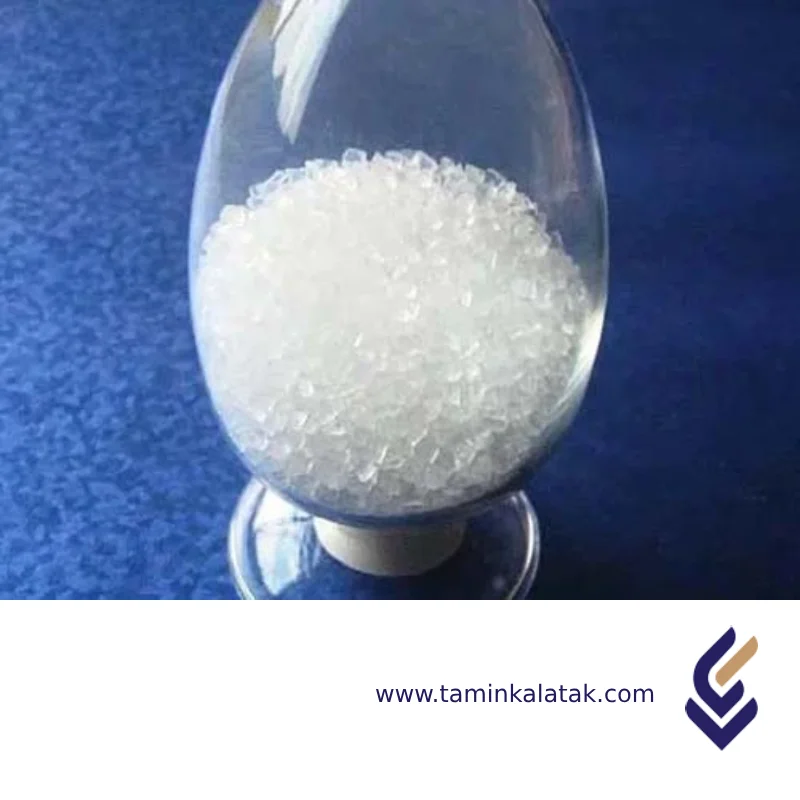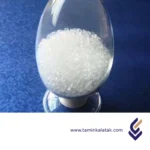Polymers are made up of very large molecules made up of many repeating units called monomers, which ultimately form this long polymer chain
A thermoplastic is a type of plastic polymer that becomes moldable or flexible at a certain temperature and solidifies upon cooling. This property allows it to be repeatedly softened by heating and hardened by cooling without significant chemical change.
Ethylene TetraFluoroEthylene (ETFE)
Ethylene Tetrafluoroethylene (ETFE) is a high-performance fluoropolymer known for its exceptional strength, lightweight nature, and resistance to environmental conditions. It was originally developed as an insulating material for the aerospace industry but is now widely used in architectural and industrial applications.
Structure
Ethylene Tetrafluoroethylene (ETFE) is a copolymer composed of ethylene (C₂H₄) and tetrafluoroethylene (C₂F₄) units. Its molecular structure consists of a repeating chain of carbon atoms bonded to both fluorine and hydrogen atoms, giving it a unique combination of chemical resistance, mechanical strength, and thermal stability. The presence of fluorine atoms enhances its non-stick properties and high resistance to UV radiation, while the ethylene component contributes to its flexibility and toughness. Unlike polytetrafluoroethylene (PTFE), ETFE has a lower fluorine content, making it slightly less chemically inert but significantly stronger and more impact-resistant. This structural composition results in a lightweight, durable material that retains its transparency and mechanical properties even under extreme environmental conditions. ETFE’s semi-crystalline structure also allows it to be processed into thin films, making it highly suitable for architectural applications, insulation, and protective coatings.
Properties
Ethylene Tetrafluoroethylene (ETFE) possesses a unique combination of properties that make it highly versatile across various applications. It is exceptionally lightweight, weighing only about 1% of the weight of glass, while maintaining high tensile strength and impact resistance. Its chemical structure provides outstanding resistance to ultraviolet (UV) radiation, weathering, and most chemicals, ensuring long-term durability in harsh environments. ETFE is highly transparent, allowing up to 95% of natural light to pass through, making it an excellent choice for architectural applications. Additionally, it has a low coefficient of friction, giving it self-cleaning and anti-fouling properties. The material is also highly flexible, capable of stretching up to three times its original length without losing integrity. With a high melting point of around 265°C (509°F), ETFE exhibits excellent thermal stability and can withstand extreme temperature fluctuations without degradation. Furthermore, it is a recyclable material, adding to its sustainability by reducing environmental impact. These combined properties make ETFE a preferred choice for applications in construction, aerospace, medical, and renewable energy industries.
Advantages
- Lightweight: Weighs only about 1% of the weight of glass.
- High Strength & Durability: Resistant to mechanical stress, impact, and punctures.
- Transparency: Allows up to 95% natural light transmission.
- UV & Weather Resistance: Does not degrade under prolonged sunlight exposure.
- Chemical Resistance: Withstands most acids, solvents, and other harsh chemicals.
- Self-Cleaning Surface: Low friction and non-stick properties prevent dirt accumulation.
- Thermal Stability: Can withstand extreme temperatures (-185°C to 150°C).
- Flexibility & Elasticity: Can stretch up to three times its length without damage.
- Eco-Friendly & Recyclable: Can be melted down and reused.
Disadvantages
- Higher Cost: More expensive than traditional materials like glass or polycarbonate.
- Flammability Concerns: Can burn under extreme conditions but is self-extinguishing.
- Limited Structural Support: Needs additional framing or inflation systems for strength.
- Softness & Scratch Sensitivity: Can be scratched more easily than glass.
- Noise Insulation: Provides less soundproofing compared to solid materials.
Applications
- Architecture & Construction: Used in stadiums, skylights, and domes (e.g., Allianz Arena, Eden Project).
- Aerospace & Automotive: Used for wire insulation and protective coatings.
- Medical Industry: Used for tubing, catheters, and biocompatible coatings.
- Chemical Industry: Lining for pipes and tanks due to its chemical resistance.
- Solar & Renewable Energy: Used in photovoltaic panel coatings and greenhouse covers.
- Electronics: Used in high-performance cable insulation for aerospace and telecommunications.
Applications
| Applications | , , , , |
|---|
ETFE
| Products | MFI (g/10 min) | Density (g/Cm3) | Process Metod | Applications | Data Sheet | MSDS |
|---|---|---|---|---|---|---|
| ETFE | 1-30 | 1.7-1.8 | Extrusion Injection Molding Rotational Molding Compression Molding Blow Molding Thermoforming | Wire insulation, fuel tubing, Tubing, catheters, and sterilizable biocompatible components Lining for pipes, storage tanks, and corrosion-resistant coatings solar panel coatings, high-performance cables |









